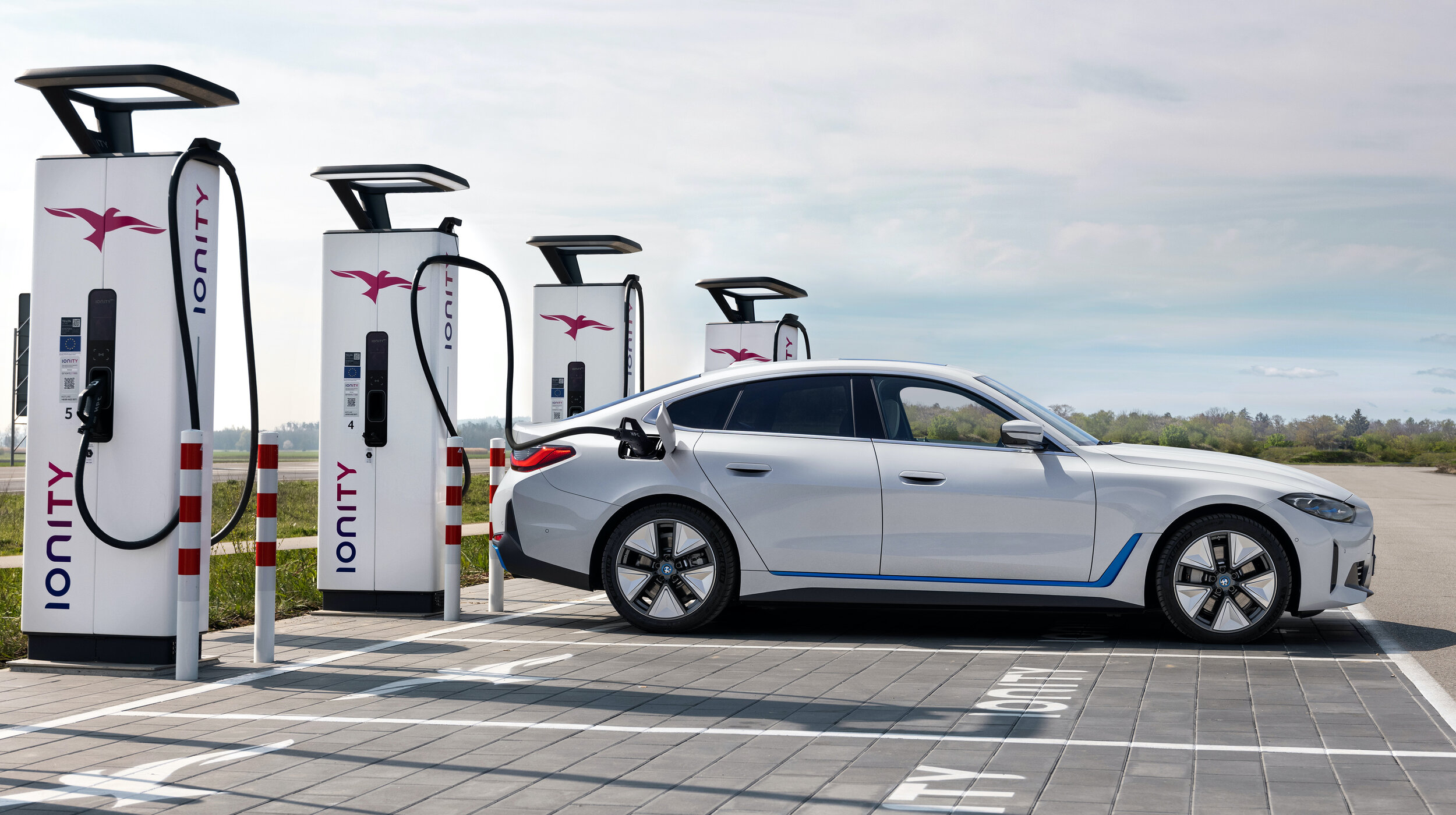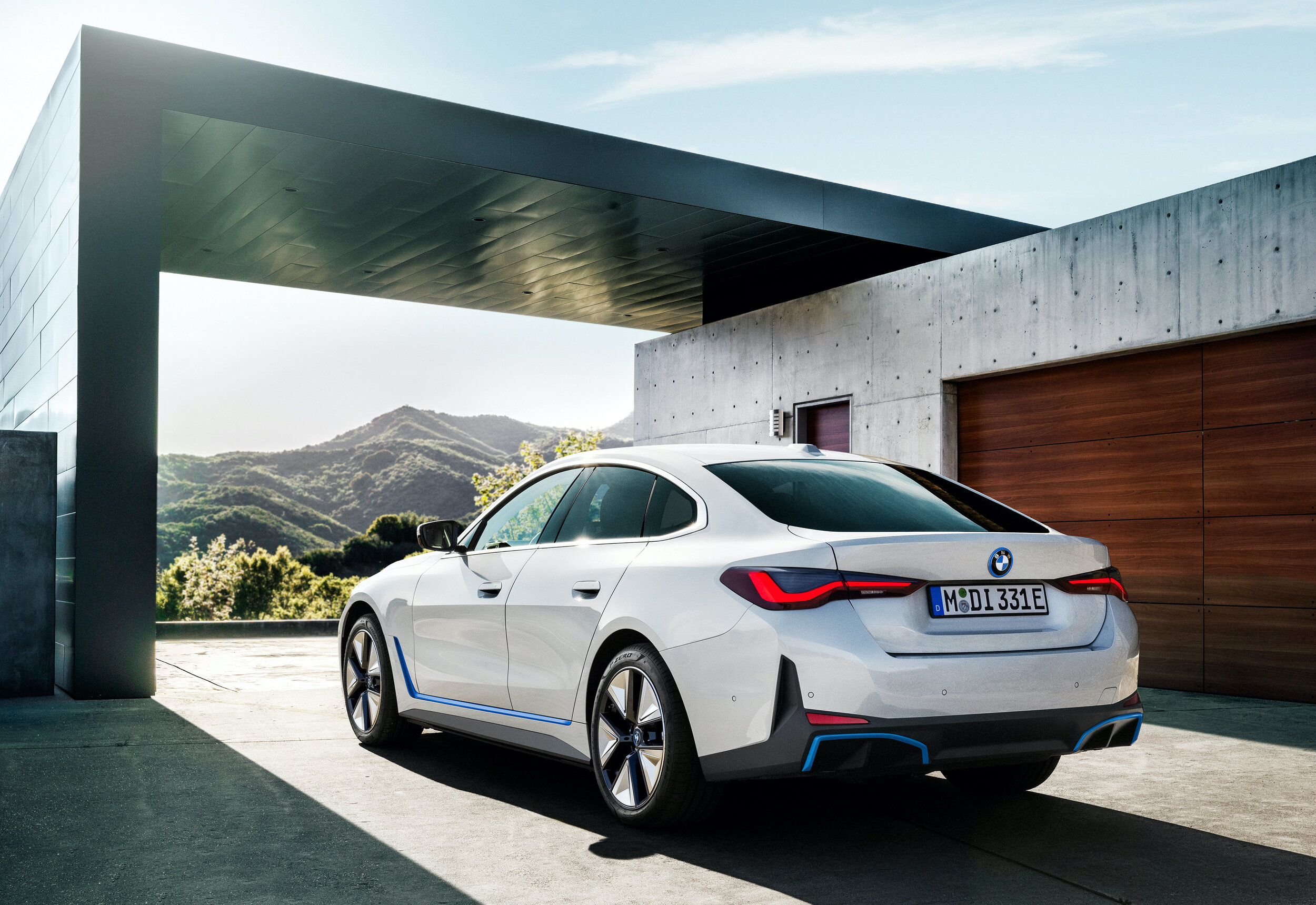Early 2022 start for BMW’s sporty electric sedan
/The i4, the first gran coupe electric vehicle to join BMW’s ranks, has been priced for NZ.
EARLY 2022 is the expected arrival timing for BMW’s electric and fastbacked version of its 4 Series sedan
In announcing NZ pricing and specifications of the i4 today, BMW’s national distributor has indicated customer deliveries will begin in the first quarter of next year, January to March inclusive.
The car will represent in two forms, a single motor i4 eDrive for $109,900 and the dual motor i4 M50, for $137,900. The latter is the first ever battery-powered performance model from BMW M.
The prices exclude on-road costs.
The BMW i4 eDrive40 is powered by a single electric motor driving the rear wheels, producing 250kW and 430Nm.
Range is quoted as 590km based on the WLTP test cycle. A cited 0-100kmh sprint time of 5.7 seconds effectively leaves it on equal pegging with the petrol-fed BMW 430i M Sport.
The flagship i4 M50 (the blue car below), meanwhile, packs 400kW and 795Nm, sent through all-wheel-drive, one motor under the bonnet driving the front wheels and another at the back driving the rear wheels.
It is claimed to achieve 0-100kmh in 3.9 seconds – so, right up there with the BMW M4 Competition, which costs $172,900 excluding on-roads and runs a 375kW/650Nm turbocharged 3.0-litre in-line six cylinder.
It will also be only fractionally slower to the legal highway limit from a standing start that the big gun V8 M5 (by 0.6s) and M8 (by 0.7s) in their ultimate Competition forms.
The i4 M50 can’t match the i4 eDrive 40’s range, but it’ll still manage up to 508km on a full charge (WLTP.)
Both electric models are powered by an 84kWh (gross capacity) battery with up to 200kW of DC charging capability. The battery is said to be up to 20 percent more energy dense than the battery in the i3.
Both models have a maximum DC fast charging rate of 200kW, meaning that charging from 10-80 per cent can be completed in around 30 minutes. In terms of AC charging, the maximum rate is 11kW. BMW cites that with the battery at only 10 per cent of charge, the i4 eDrive40 can optimally add up to 164 kilometres of driving range in under 10 minutes, or 140km for the i4 M50.
Though it delivers in a distinct gran coupe styling, the car looks fairly similar to the 4-Series from the front – the vast two-piece grille makes certain of that.
However, to make sure you don’t mistake this aggressive-looking four-door coupe for a petrol- or diesel-powered BMW, there are plenty of bright blue details – just like those on the BMW iX3 SUV and new iX EV incoming very soon. Another styling element is a large contrasting rear diffuser – no fake exhaust trims here.
It is longer than a 4 Series Coupe thanks to its extra set of doors, but its sloping roofline means it looks sleeker than a 3 Series sedan.
The most immediately eye-catching interior feature is A vast infotainment screen. This huge widescreen display is shared with the iX SUV and looks nothing like what you get in an ordinary 3- or 4-Series. It combines a 12.3-inch digital driver’s display with a 14.9-inch central touchscreen in a curved free-standing design.
This screen runs the latest iDrive 8 version of BMW’s infotainment software, meaning it has the latest ‘Hey BMW’ voice activation features and a host of menu functions that can be personalised, so you can prioritise features you use most.
The system also does away with physical buttons for the climate control and assumes an owner is up to using on-screen menus or voice control to adjust the cabin temperature.
The car comes come with Apple CarPlay and Android Auto smartphone mirroring, and it can update its software automatically in as little as 20 minutes using wireless over-the-air updates.
The M50 has the more comprehensive equipment, including a heavy focus on M treatments, however the entry car also takes a wide span of driver assistance functions. It can be enhanced by a visibility pack, which adds metallic paint, an electric glass roof and the laser light headlamps standard to the M50, for $5800. Both models can also be provisioned with a comfort pack, including steering wheel and front and rear seat heating, that costs $1050 on the M50 as it has, as standard, the electric lumbar adjust that packs in for the ‘40’, where the package costs $1700.
Meantime, BMW internationally has shown off an interesting concept for the IAA Mobility motor show in Munich, an electric city car that is entirely recyclable.
Cited as being a representation of a "compact BMW for the year 2040 that is focused squarely on sustainability and luxury", the i Vision Circular (above) takes the shape of a four-door, four-seat hatchback, produced using 100 percent recycled or recyclable materials. This creates a closed loop of reusable materials, giving the car its 'Circular' name.
Following ‘the four principles of Rethink, Reduce, Reuse and Recycle’, the number of parts required to build the vehicle has been reduced – deleting exterior paint, leather and chrome, for example – while those that are used can be recycled or repurposed.
Up front, wide interpretations of BMW's traditional kidney grilles feature, incorporating the headlights, but eschewing a traditional grille surround in favour of making the grille a "digital surface" with illuminated highlights.
There's no stick-on BMW roundel, instead etching the badging onto the bodywork to "avoid using extra add-on parts".
The windscreen and roof create a single piece of glass that extends the length of the vehicle. The wheels match the headlight and grille design with slim spokes, and the rear end adopts a similar style with a single LED light bar.
The interior uses 3D printing on the dash to reduce the use of glue and creates a unique one-piece design with embedded crystal materials. And rather than a traditional touchscreen on the centre of the dash, the information is located above the instrument panel at the bottom of the windshield.
The car’s four lounge-style seats were created using recycled plastic and are held within a light-gold aluminum frame. Even the steering wheel was 3D-printed using a special wood powder.






















